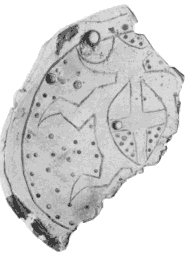
Photo courtesy of West Virginia Archeology Society
© 1983 WV Archeology Society, used with permission
But this alone I know full well, I do not love thee, Dr. Fell. - Thomas Brown 1663-1704

Photo courtesy of West Virginia Archeology Society |
CWVA Home Page |
| "Ogham Index" Introduction Page |
© 2003 CWVA |